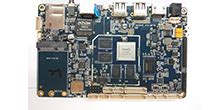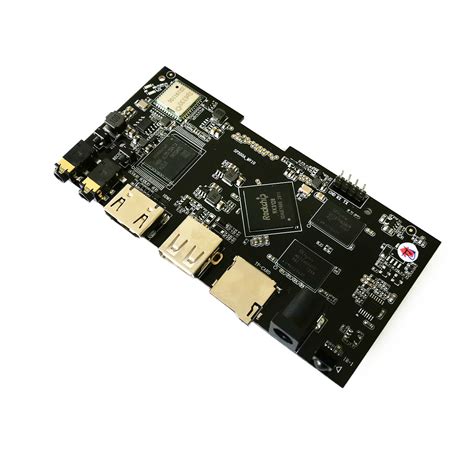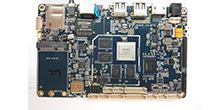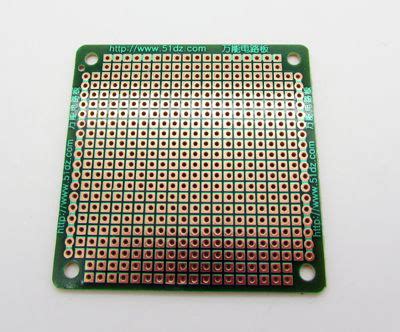Understanding PCBA OEM Solutions for Efficient Electronics Manufacturing

Key Takeaways
Understanding PCBA (Printed Circuit Board Assembly) solutions is essential for businesses looking to enhance operational efficiency in electronics manufacturing. By leveraging PCBA OEM (Original Equipment Manufacturer) capabilities, companies can significantly streamline their production processes. PCBA plays a crucial role in the development of electronic devices, serving as the backbone for functionality and reliability.
One of the key takeaways is that partnering with PCBA OEM providers offers various advantages. These experts bring specialized knowledge and highly efficient production techniques that can minimize lead times and reduce costs. Many businesses discover that focusing on their core competencies while relying on an experienced pcb assembly partner fosters innovation and greater agility in responding to market demands.
“Choosing the right PCBA OEM partner can lead to transformative results in manufacturing processes.”
Moreover, understanding the entire pcb assembly process—from initial design to final production—allows companies to identify potential areas for improvement. The incorporation of innovative technologies in this sector continually drives efficiency. For instance, automation and advanced quality assurance measures are transforming how business approaches PCBA, ensuring higher quality outputs while maintaining cost-effectiveness.
Table: Benefits of Partnering with PCBA OEM Providers
| Benefit | Description |
|---|---|
| Cost Reduction | Outsourcing reduces the need for extensive capital investment |
| Accelerated Production | Specialized providers can expedite the manufacturing process |
| Quality Assurance | Enhanced focus on quality control through RMS methods |
| Access to Technology | Leverage cutting-edge technologies without heavy investments |
In summary, businesses must recognize the significance of embracing innovative practices and leveraging expertise found within PCBA OEM partnerships, as this approach is pivotal for achieving not only efficiency but also maintaining high standards in electronics manufacturing.

Introduction to PCBA OEM Solutions
The emergence of PCBA OEM solutions has significantly transformed the landscape of electronics manufacturing. These solutions offer a streamlined approach to producing pcb assembly, facilitating a more efficient manufacturing process. At their core, PCBA (Printed Circuit Board Assembly) OEM providers take on the responsibility of designing and manufacturing assembly processes, allowing businesses to focus on their core competencies. The collaboration with these specialized providers not only reduces operational burdens but also enhances innovation through access to cutting-edge technologies and expertise. By leveraging pcba services, companies can achieve a faster time-to-market, ultimately improving competitiveness in an increasingly dynamic industry. Furthermore, these solutions are pivotal in maintaining high-quality standards throughout the production lifecycle, ensuring that each component is meticulously crafted and tested for performance and reliability. In essence, understanding the role of PCBA OEM solutions is crucial for organizations striving for excellence in electronics manufacturing.

The Importance of PCBA in Electronics Manufacturing
In the realm of electronics manufacturing, PCB assembly holds a pivotal role, serving as the backbone for countless modern devices. The process of pcba involves the intricate assembly of electronic components onto a printed circuit board, establishing connections that allow electronic devices to function seamlessly. With the increasing complexity of technology, partnering with PCBA Original Equipment Manufacturers (OEM) has become essential for achieving optimal efficiency and quality. These collaborations not only enhance manufacturing capabilities but also streamline production timelines, allowing for quicker time-to-market for new products. As the electronics landscape continues to evolve, the significance of pcba cannot be overstated; it offers manufacturers a competitive edge by ensuring that their products are built to high standards while managing costs effectively. In summary, understanding the critical role that PCB assembly plays in electronics manufacturing is fundamental for companies aiming to innovate and thrive in an ever-competitive market.

Key Benefits of Partnering with PCBA OEM Providers
Collaborating with PCBA OEM providers offers several advantages that significantly enhance efficiency and quality throughout the electronics manufacturing process. One of the primary benefits is access to specialized expertise in pcb assembly, enabling companies to leverage advanced technologies and methods specific to the assembly of printed circuit boards. This expertise is not merely about mechanical assembly; it encompasses a deep understanding of the entire manufacturing ecosystem, from sourcing components to meeting industry compliance standards.
Moreover, partnerships with PCBA manufacturers allow for cost-efficiency. Organizations can reduce overhead costs and investments in equipment, as they can utilize the existing infrastructure and resources of their OEM partners. This operational flexibility often results in faster turnaround times, which is crucial in today’s rapidly evolving market where time-to-market can determine competitiveness.
Concerning innovation, these providers often adopt cutting-edge tools and methodologies that not only streamline processes but also enhance the overall quality of pcb assembly. For instance, advancements in automation and smart manufacturing technologies can help detect defects early in the production phase, ensuring a high-quality end product while minimizing waste.
Finally, working with established PCBA OEM providers extends beyond mere production; it fosters a partnership focused on continuous improvement. By tapping into their partners’ ongoing research and development efforts, companies can stay ahead of trends and adapt to changing market demands more readily. This synergy ultimately empowers businesses to deliver superior products efficiently while maintaining flexibility within their supply chain.

The PCBA Manufacturing Process: From Design to Production
The PCBA (Printed Circuit Board Assembly) manufacturing process is a critical stage in the development of electronic products. This process begins with the initial design of the circuit board, where engineers utilize Computer-Aided Design (CAD) software to create a detailed blueprint. Once the design is finalized, manufacturers focus on pcb assembly, which involves several key stages: material selection, component placement, soldering, and inspection. In this phase, various materials, including copper-clad laminates and solder paste, are integrated to form the pcba.
The placement of components on the board is typically achieved through automated machines that ensure precision and speed. Subsequently, soldering usually occurs using either wave soldering or reflow methods, solidifying connections between components and the circuit board. This is followed by thorough inspection processes where techniques such as automated optical inspection (AOI) are employed to identify any defects or irregularities in assembly. Each step of the process plays a vital role in not only ensuring performance but also enhancing efficiency and quality in production. By streamlining these stages through collaboration with PCBA OEM providers, manufacturers can significantly reduce lead times and optimize resource utilization, ultimately leading to a reliable final product ready for market distribution.

Innovations Driving Efficiency in PCBA Manufacturing
The landscape of pcba manufacturing is continually evolving, driven by remarkable innovations that significantly enhance efficiency and quality. One of the major advancements is the integration of automated assembly processes, which reduce human error and increase production speed. This technology enables pcb assembly lines to operate around the clock, maximizing output while minimizing labor costs. Moreover, the use of advanced materials in pcba production has led to lighter and more durable components, enhancing the overall performance and longevity of electronic devices. Another important trend is the application of data analytics within manufacturing processes; real-time monitoring and predictive maintenance can preemptively address potential issues, thus ensuring a smoother workflow. Additionally, developments in design software facilitate more complex circuit layouts, allowing for increased functionality without sacrificing space. Together, these innovations are shaping a robust framework for the future of electronics manufacturing, ultimately pushing the boundaries of what is possible in pcb assembly by promoting efficiency through every stage of production.
Quality Assurance in PCBA OEM Solutions
Quality assurance is a critical component in PCBA OEM solutions, as it directly impacts the reliability and functionality of the finished product. In the realm of pcb assembly, stringent quality control measures are implemented throughout every stage of the production process. This begins with thorough design reviews to ensure that all specifications meet industry standards. As production commences, PCBA manufacturers utilize a combination of automated testing systems and manual inspections to detect any defects or deviations early on. These rigorous validation processes help in identifying potential issues such as solder joint integrity, component placement accuracy, and overall assembly quality. Furthermore, adopting standards like ISO 9001 allows OEMs to maintain consistency and assure customers that their pcb assembly meets expected levels of performance and durability. Together, these practices contribute to minimizing waste and reducing costs while maximizing customer satisfaction, reflecting the essential role of quality assurance in driving successful PCBA OEM partnerships for efficient electronics manufacturing.
Case Studies: Successful Implementations of PCBA OEM Strategies
One of the most compelling ways to understand the impact of pcba OEM strategies is through real-world case studies that showcase how various companies have integrated these solutions into their manufacturing processes. For instance, a leading consumer electronics firm successfully partnered with a PCB assembly provider to streamline its production line. By leveraging the expertise of the pcba OEM, they were able to reduce their time-to-market significantly while maintaining high-quality standards. This collaboration not only enhanced their product design efficiency but also optimized the overall supply chain management.
Another notable example involves an automotive manufacturer that adopted pcba OEM solutions to improve reliability in their embedded systems. By implementing advanced manufacturing techniques along with rigorous testing protocols supplied by their OEM partner, they achieved a remarkable reduction in defect rates. This not only bolstered consumer confidence in their products but also contributed to long-term cost savings, demonstrating that strategically investing in pcb assembly can yield substantial returns.
These case studies highlight the transformative power of effective partnerships with pcba OEM providers. Through innovative approaches and strategic alignment, companies are finding new ways to enhance productivity and quality while navigating the complexities of electronics manufacturing in today’s competitive landscape.
Future Trends in Electronics Manufacturing and PCBA Solutions
As industries evolve, the landscape of electronics manufacturing continues to undergo significant changes, particularly in the realm of PCB assembly. The advent of new technologies and methodologies is shaping how businesses approach PCBA solutions. One prominent trend is the increased integration of automation and artificial intelligence, which streamlines various aspects of the pcba manufacturing process. This shift allows for enhanced precision and speed, resulting in higher quality outputs and reduced production times. Furthermore, with the growing emphasis on sustainability, manufacturers are increasingly adopting eco-friendly practices and materials in their PCB assembly operations. These changes not only meet consumer demand for greener products but also help companies comply with stricter environmental regulations. The rise of smart electronics also influences PCBA trends, as devices become more complex and interconnected. Companies are thus focusing on innovative designs that accommodate multiple functionalities within smaller footprints, making advanced pcb assembly techniques essential for success. Overall, staying ahead in this rapidly changing environment requires manufacturers to embrace these trends while prioritizing efficiency and quality in their PCBA solutions.
Conclusion
In summary, understanding PCBA OEM solutions is essential for businesses that aim to enhance their electronics manufacturing efficiencies. The reliance on pcb assembly processes allows manufacturers to leverage specialized expertise, providing a seamless integration from design to production. By collaborating with PCBA providers, companies can not only achieve cost-effectiveness but also improve production speed and product quality. The essential nature of these partnerships becomes particularly apparent when considering the evolving landscape of technology, where innovation is key. Engaging a PCBA OEM partner can significantly reduce time-to-market and foster an environment for ongoing innovation, ensuring that businesses remain competitive in a rapidly changing industry. As trends move towards greater automation and smart manufacturing solutions, the role of PCB assembly in future electronics will only grow more crucial. Thus, investing in the right PCBA strategies will be pivotal in driving operational success and sustainability in electronics manufacturing.
FAQs
What is PCBA?
PCBA, or Printed Circuit Board Assembly, refers to the process of soldering electronic components onto a printed circuit board. This process essentially transforms a bare PCB into a working piece of electronic equipment.
Why should I consider PCBA OEM solutions?
Partnering with PCBA OEM providers offers numerous advantages, such as cost-effective production, access to expertise, and streamlined manufacturing processes. It enables businesses to focus on their core competencies while ensuring high-quality pcb assemblies.
How can understanding the PCBA manufacturing process enhance my project?
A thorough understanding of the PCBA manufacturing process, which includes design, prototyping, fabrication, and assembly, allows for better planning and execution. This knowledge can help identify potential challenges and solutions upfront, enhancing overall project efficiency.
What role does quality assurance play in PCBA OEM solutions?
Quality assurance is critical in pcba manufacturing. Rigorous testing and inspection processes ensure that every assembly meets safety and performance standards, minimizing defects and enhancing customer satisfaction.
What future trends should I be aware of regarding PCBA solutions?
Future trends in electronics manufacturing, including automation, advanced materials, and IoT integration into PCB designs are expected to significantly shape the landscape of pcba solutions. Staying informed about these trends can help businesses adapt effectively.







